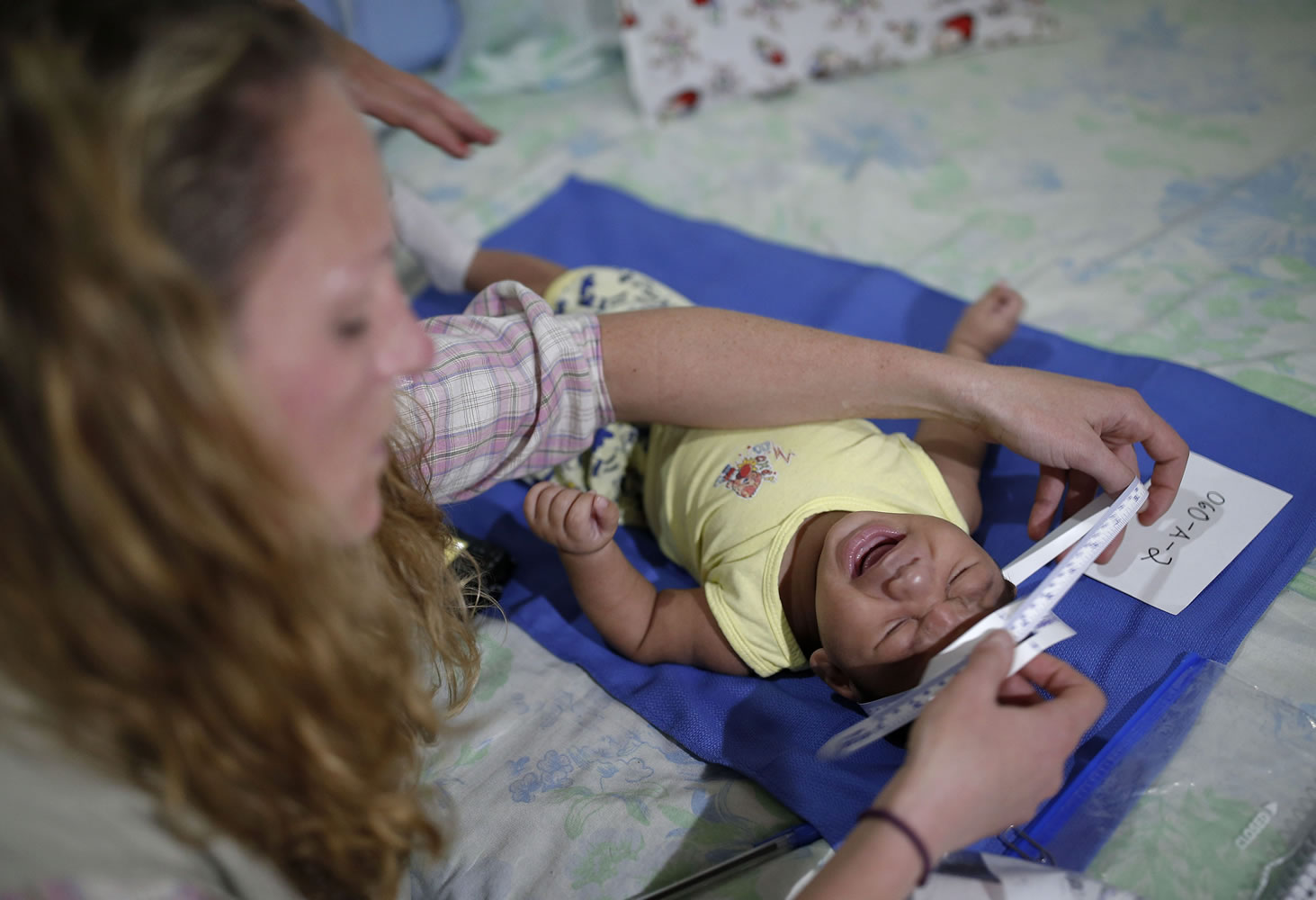JOAO PESSOA, Brazil — U.S. and Brazilian health workers seeking to determine if the Zika virus is causing a surge in birth defects ran into the chaotic reality of northeastern Brazil on their study’s first day Tuesday. Traffic and logistical problems shredded their schedule, delaying or preventing meetings with mothers and babies.
The plan conceived in the air-conditioned halls of Brazil’s Health Ministry and the Atlanta headquarters of the Centers for Disease Control and Prevention had seemed simple:
Eight teams of “disease detectives” are looking to enroll about 100 mothers of babies with microcephaly, a rare defect that causes newborns to have unusually small heads and damaged brains. They also want to sign up two to three times as many mothers of babies without the birth defect, born in the same area at around the same time.
Maternity hospitals in Paraiba, the impoverished state that is one of the epicenters of Brazil’s tandem outbreaks of Zika and microcephaly, provided the CDC and its Brazilian partners with mothers’ addresses.
The field teams just had to show up at the homes and persuade mothers to participate in the study, which is aimed at determining if Zika really is causing microcephaly in Brazil, as the government insists, even as a growing number of critics contend that there is not enough evidence yet to make the link.
But on day one of the study’s data-collection phase, the same precarious conditions that contributed to the proliferation of the mosquito-borne virus throughout the region proved to be a stumbling block for researchers, even in Paraiba state’s more-developed capital, Joao Pessoa.
Locked in the city’s chronic traffic, one team missed its first appointment, and the two home visits that were scheduled to take place in the morning didn’t get underway until well after lunchtime.
“Obviously, we’ve seen the problems of logistics — to be able to reach the families, to have them be there,” said Dr. Alexia Harrist, a Boston-born pediatrician who works in the CDC’s Epidemic Intelligence Service. “If things take longer, things take longer, but I think we’re all really dedicated to getting it done.”
Paraiba is among Brazil’s poorest states, with many residents living in hard-to-reach rural regions. The roads are precarious, and so are communications, making reaching those families a challenge.
Packed into a small sedan, Harrist, three Brazilian health workers and a driver weaved from the CDC’s headquarters in a beachfront hotel to the outskirts of Joao Pessoa along pothole-marred streets swimming with runoff from recent rains.
They turned onto a side street lined with trash, then turned again and again onto successively narrower and more pocked streets that carried them into the heart of the Taipa shantytown. The Aedes aegypti mosquito that spreads Zika proliferates in such neighborhoods, where omnipresent trash provides breeding grounds in discarded margarine tubs, yogurt containers and plastic bottle caps.
When the going got too rough, Harrist and her colleagues parked and headed on foot along a dirt road running with raw sewage and dotted by foraging chickens and goats to a three-room cinderblock home.
Janine dos Santos, a 23-year-old unemployed former towel factory worker, shares the space with her mother, two siblings and two children, including Shayde Henrique — born in November with the truncated head that is a sign of microcephaly.
“I didn’t expect to see all these people,” Santos said, adding that the visit renewed her hopes of understanding what happened to Shayde. “Not only me, but all the mothers, we want to understand the mystery behind all this — what really causes microcephaly?”
She and the family answered an extensive questionnaire probing everything from whether she used insect repellent during pregnancy to what was the source of their drinking water. The team also drew blood samples from mother and infant, setting off a new chorus of screams from a child who, like many infants with microcephaly, is rarely quiet.
Down the street, the team knocked at the abandoned warehouse where another new mother, 26-year-old Aline Ferreira, squats with her fisherman husband and three kids.
Her 4-month-old, Angeline Karolayne, is in good health and doesn’t suffer from microcephaly, and Ferreira agreed to take part in the study as a control case. Such cases will be a critical element in understanding whether Zika is triggering microcephaly, and if so, whether it’s doing so alone or with contributing factors.
Ferreira patiently responded to the litany of questions. “When I was pregnant, there were all these problems with Zika and microcephaly and . I could very well be in the place of any mother whose baby has microcephaly,” she said.
Organizers expect it will take a month to gather data, but acknowledge it could take longer. Ferreting out results from the data will take several more months.
Despite Tuesday’s rocky start, the CDC’s Harrist said the generosity and openness of the two young mothers her team managed to contact gave her hope.
“I’m actually encouraged by what happened today,” said Harrist, who spent time working in Sierra Leone during the Ebola outbreak in West Africa.
She said Santos and Ferreira seemed enthusiastic to join in the study. “I hope that means they think that the study is important,” she said.



